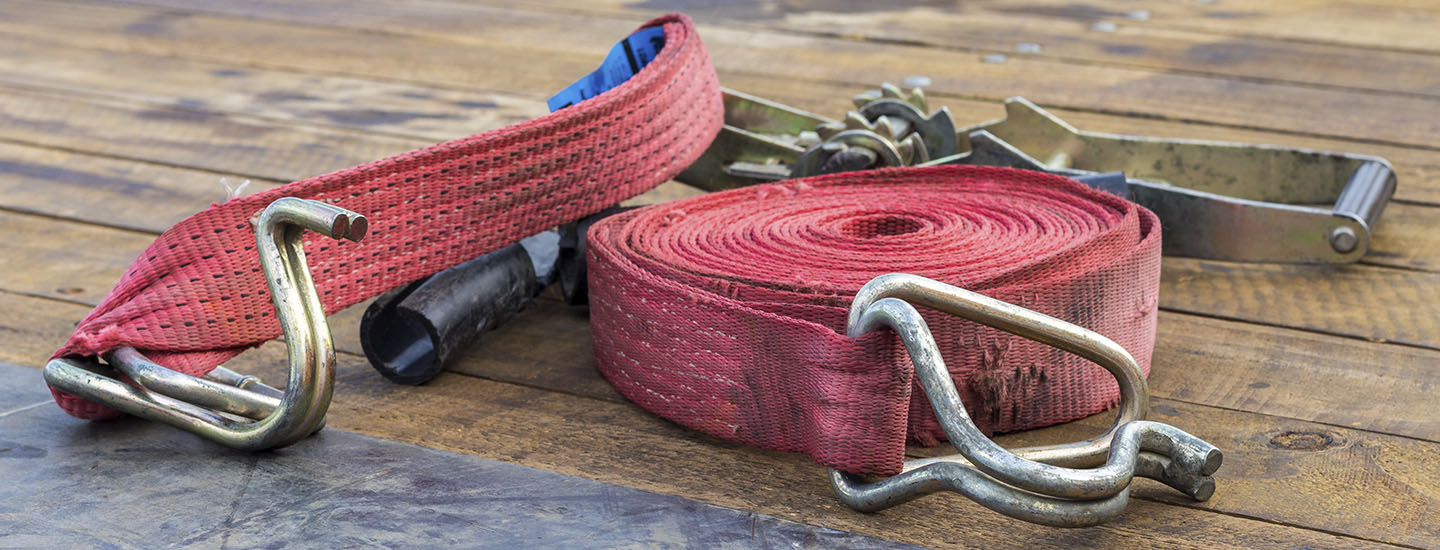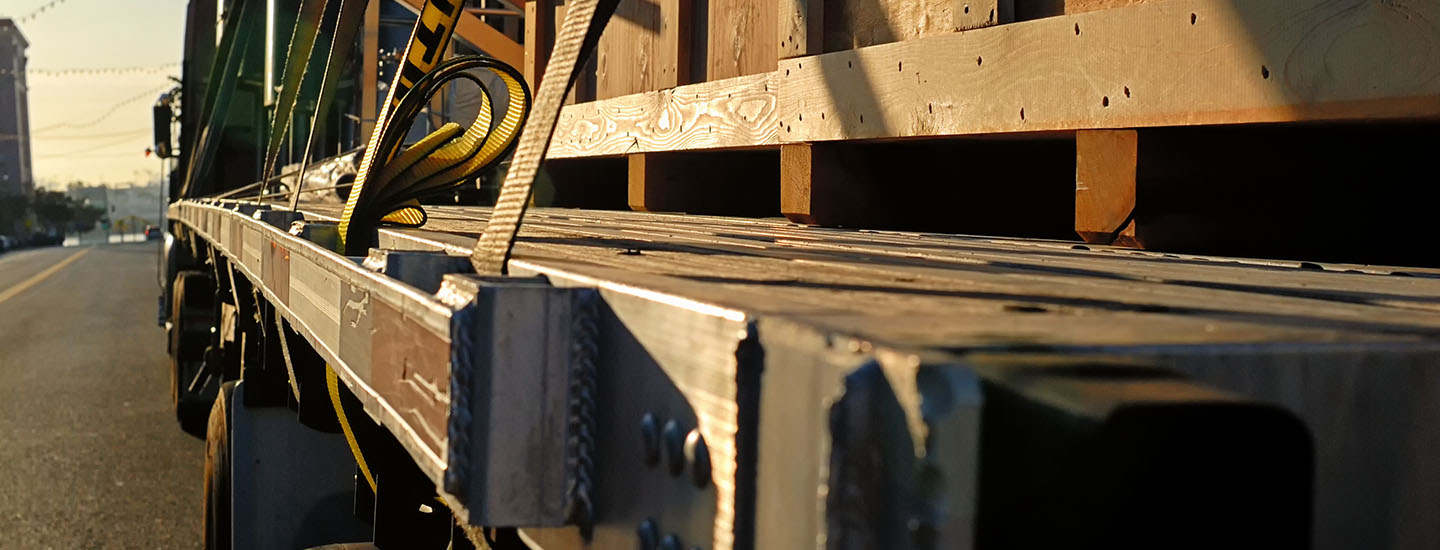January 8, 2019

Is Your Cargo Secure?
It’s one of those things that you think to yourself “it’ll never happen to us,” and when it does, it causes all sorts of headaches. Properly securing your trailer’s load, whether it’s a dry van, reefer or flatbed, is a bigger issue than most people think. Every year, trucks tip over when a driver hits a corner a little too quick. The unsecured cargo shifts — causing accelerated weight and mass to damage the load, or worse yet, topple the trailer.
It’s why law enforcement looks at load securement so strongly. According to Commercial Vehicle Safety Alliance’s (CVSA) 2018 International Roadcheck report (from a 3-day check this summer in the U.S. and Canada), 13% of the nearly 12,000 trucks that were deemed out-of-service had load securement issues.
What’s the biggest issue in load securement? Statistics show the leading cause of cargo-related incidents is faulty equipment (tie downs, straps and other equipment) -- not driver error or improper loading methods. Although an employee at the loading dock may be responsible for loading the trailer, it is still the driver’s responsibility to check to make sure everything is securely fastened before departure. Ultimate responsibility comes into play if you’re a for-hire carrier – liability falls on the driver and the contracted carrier – not the shipper.
The big thing to reiterate to your drivers is the importance of inspecting the securement straps to ensure there are no damaged, defective, loose or unfastened tie-downs. Everything becomes worn over time and wears out. It’s also imperative that drivers know the rules for how many tie-downs are required for the freight they are hauling and know when to use blocking, bracing, dunnage, and load-locking bars to further secure the load.
Dry Van and Reefer Trailers
While van trailers usually don’t pose the same threat as flatbed trailers when it comes to faulty load securement issues, it’s still important everything in the van is secured to ensure no cargo loss from damage.
Drivers rely heavily on load-locking bars and bracing to stabilize cargo inside their boxed vans. To prevent cargo from tipping or shifting, load-locking bars can provide support either vertically or horizontally. Depending on how the cargo is loaded will determine whether the cargo needs vertical or horizontal support. When cargo needs vertical stabilization, a load-locking bar will be pressed up against the cargo, and through a jacking device, create a tight wedge between the floor and ceiling of the van. The rubber feet at the ends of the bar prevent the bar from sliding out of place.
The same concept applies to cargo in need of horizontal securement. The only difference is that the bar will be fastened to the walls of the van to provide cargo securement.
What’s more, think strategically when you load – limit space between your cargo. If cargo is packed in tight, it’s important to have enough dunnage (padding material) in-between the cargo to keep the cargo separated but secure. Dunnage also helps keep the cargo from moving around and coming ‘free.’ You can also use some type of structural brace at the trailer ends – between the cargo and front and rear of the trailer. This will help eliminate cargo shifting on acceleration or braking. That’s critical. If a load shifts and buckles, dents or cracks the trailer door, it can cost thousands of dollars in repairs (often not insurable).
Remember, the CVSA enforces the 0.8g, 0.5g rule. That means, the securement must be able to withstand 80 percent of the cargo’s weight in the forward direction and 50 percent of the cargo’s weight in other directions. That means, you better have strong down pressure on your cargo so that it’s not moving around while you’re on the road.
Food for thought: When you spec out your next trailer you should discuss how many tie downs, rows of etrack, logistics track, etc., that may be necessary in your operation. Remember, if your drivers don’t have the proper tools to secure the load, then damage can result. It’s strategic to tell your body or trailer manufacturer the exact locations of the securement devices when the body or trailer is being built.

Flatbeds
Freight on a flatbed that slips out of its down-pressure hold and hits the pavement not only causes damage to the cargo, but can cause serious accidents for any cars or trucks trailing behind, and perhaps lead to a road closure. There is liability involved as well — and possible litigation.
Again, the 0.8, 0.5g rule applies here, and like all freight, it’s key to have it loaded properly, with the weight being distributed equally so there isn’t too much weight on one axle.
The Federal Motor Carrier Safety Regulations (FMCSR) requires that there must be one tiedown for cargo less than five feet long, weighing under 1,100 pounds and two tiedowns for cargo under five feet long weighing more than 1,100 pounds. If cargo is longer than five feet but less than 10 feet, two tiedowns are required. Two tiedowns are also required for cargo longer than 10 feet with an additional tiedown every 10 feet in cargo after.
Weight of the cargo also comes into play, so it’s important to know what kind of tiedown (straps, chains, and tensioning devices, including winches and ratchets) and the weight capacity for the tiedown you need based on your cargo so that you’re confident they will hold up.
All told, training drivers on load securement should be mission critical for any fleet. PacLease’s PacTrainer program offers two online courses to teach you and your drivers how to properly secure dry van and flatbed cargo. Take advantage of our services. In the meantime, you may wish to check out this tutorial on loading: Driver’s Handbook on Cargo Securement.
